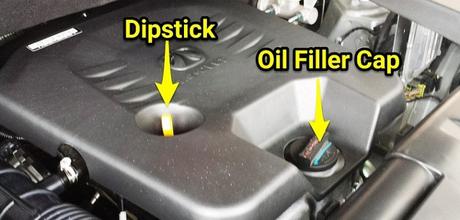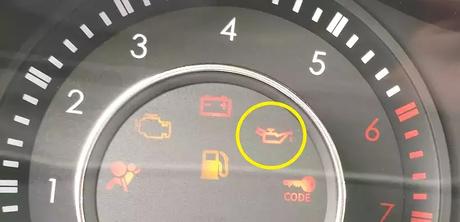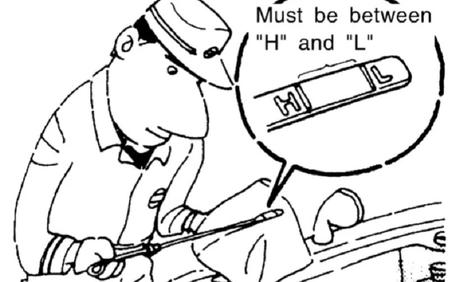 New car owners often ask how to check the engine oil level in their car? Well, to check the oil level in the car just follow what is indicated on the car user manual or car maintenance manual. It is a must to regularly check the oil level in the car especially every time before the car is used. It may result in a car break down if there is not much engine oil presence in the engine. In case the car user manual is not available here's how to check the oil in the car.
New car owners often ask how to check the engine oil level in their car? Well, to check the oil level in the car just follow what is indicated on the car user manual or car maintenance manual. It is a must to regularly check the oil level in the car especially every time before the car is used. It may result in a car break down if there is not much engine oil presence in the engine. In case the car user manual is not available here's how to check the oil in the car. If the low oil warning lights on the dashboard are on, you should check the engine oil level immediately and add engine oil as needed. Before you drive your car in the morning, checking the car's oil must be done when the engine is cold.

How to check the oil in a car?
It's easy, all you have to do is follow the following simple steps.
Step 1. Start the car and park it on the level road, let it run until the engine reaches the operating temperature.
Step 2. Turn off the engine and wait for at least five minutes for the oil to drain back into the oil pan before checking the oil level. After at least five minutes, open the hood, locate the oil dipstick, and pull out the dipstick. Wipe it clean, use a clean cloth to wipe off the oil stains on the dipstick, insert it again, and check the level of the oil in your car.

Step 3. Remove the dipstick again and check the oil level, it should be between the “H” and “L” marks or between the cutout edges. If the oil level is below the “L” mark/low level, remove the oil filler cap and pour recommended oil through the opening. Do not over a refill.
Step 4. Check the oil level again with the dipstick. The normal range of the engine must be within the required value set as illustrated below.

Do not overfill the engine with oil. What will happen if the engine is overfilled with oil?
When the engine is overfilled with oil it will stir on the oil pan and it will create bubbles. The bubbles will be spilled over from the oil level gauge and the pump cannot suck enough oil that will cause the engine to seize up.
If the engine oil level exceeds the upper limit mark - H-, do NOT start the engine. This may damage some parts like the catalytic converter and also the engine.
Operating with an insufficient amount of oil will also damage the engine, if such damage occurs it is not covered by the warranty that is why it is necessary to check the engine oil regularly.
Also, during the break-in period or between oil maintenance intervals, it is normal to add some oil depending on the severity of operating conditions.
While the car runs, the engine will consume a certain amount of engine oil. The amount of consumed engine oil will depend on the way the vehicle is driven and used. Therefore, it's a must to regularly check the engine oil level. Before adding fuel and driving long distances, it is recommended to check the engine oil level. When the vehicle is driving a long distance on an expressway, towing a trailer, or climbing a mountainous road, the engine is running under harsh conditions and the engine oil level should not exceed the upper limit mark. - H -.
Engine oil is a highly inflammable substance. While adding engine oil, make sure to exercise care. Be careful to NOT spray engine oil onto any engine part or the exhaust system.
Make sure that the oil filler cap remains tight as possible, to prevent engine oil from splashing out and causing a fire when the engine runs.
Want more videos?
Subscribe to my channel!
